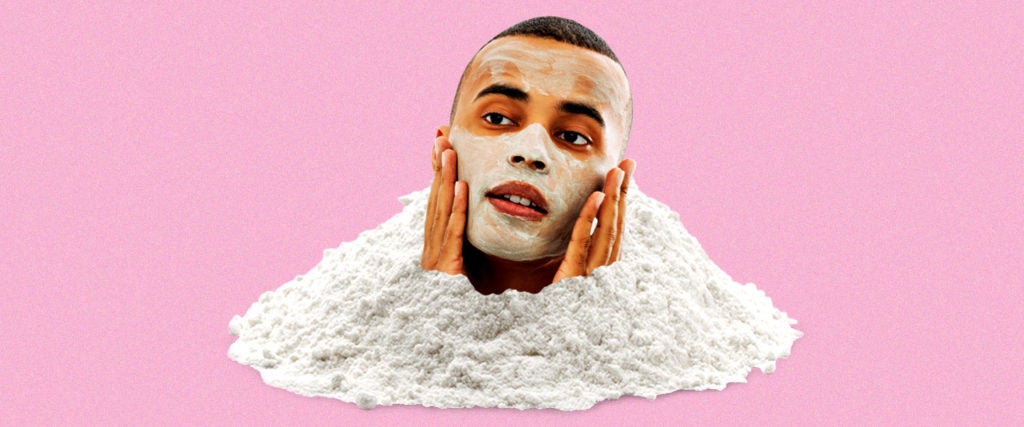Baking soda can really do it all: You can use it to deodorize your refrigerator, clear a clogged drain, ease heartburn, make super fluffy pancakes aaaaaaand give your face a chemical burn. But while popular DIY ingredients like baking soda are often touted as multipurpose and safe for everything, they’re not always the right pick for the more delicate parts of the body. Some people can get away with using it on their face, some end up red and pimply. How do you know which camp you’ll fall in?
For starters, there’s nobody that baking soda is really perfect for, skincare-wise. Yes, it’s “all-natural” and doesn’t contain the ingredients commonly found in other face products that can cause irritation, like fragrance or sodium lauryl sulfate, but you could basically say the same thing about bleach. Baking soda is obviously a bit less harsh than bleach, it’s still not quite what’s best for your face though.
The problem with baking soda is that it’s basic, while the skin itself is slightly acidic. In fact, your skin has something called an “acid mantle,” or a protective acid-based layer. This layer helps maintain normal oil production and natural bacteria, both necessary for good skin health. When we put something as basic as baking soda on the acid mantle, it can break or deteriorate. In the short term, this can cause irritation, redness and even breakouts. Repeated damage to the acid mantle can become a long-term problem, too, requiring months of gentle care to restore it.
On top of baking soda’s basic-ness, it’s also a physical exfoliant, and its gritty texture alone can be too harsh for many people’s skin. Frequent exfoliation can similarly damage your acid mantle, as well as cause microtears on the skin that can become infected or cause breakouts. Some people with very resilient skin might get away with using baking soda on their face for a while, but it’s probably only a matter of time before they start noticing some irritation. Whether you’re mixing a paste from baking soda and water and wearing that as a mask, or using that paste as a type of face-wash, none of it is a great idea.
That said, plenty of products on the market advertised for the face can be similarly damaging. A 2012 study found that some moisturizers available in the U.S. were just as basic as baking soda, when they should hypothetically maintain a pH similar to the skin. As for what you should be looking for, a pH of 5.5 is ideal. Men’s skin is slightly more acidic than women’s, so 5.0 can work, too. Unfortunately, not many face products have their pH readily available. SebaMed products are advertised as having a pH of 5.5, or you can look for face washes labeled as being “gentle,” “fragrance-free” and “dermatologist-recommended.” The fragrance-free, sensitive-skin version of Dove bar soap has a pH of around 6, which isn’t too bad.
Whether you were considering using baking soda on your skin as a way of saving money or as a means of building a more “natural” routine, it’s probably best to just stick to regular ol’ soap. The risk of hurting your skin just ain’t worth it.

